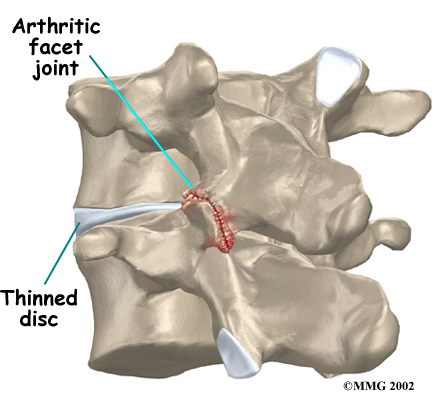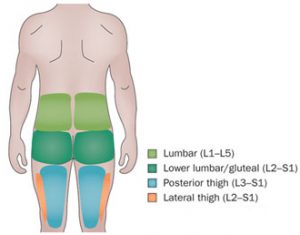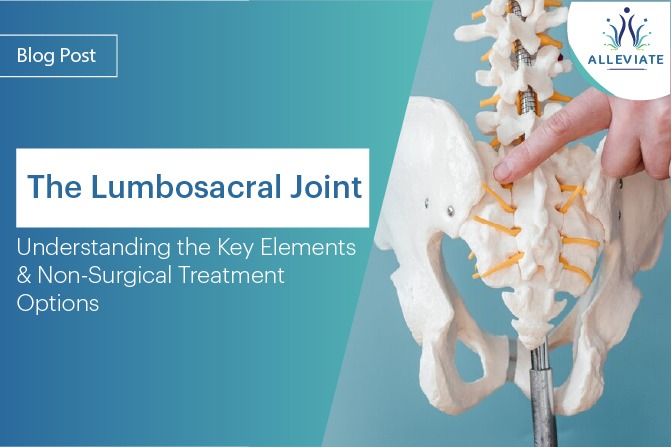Introduction
The lumbosacral joint, a crucial connection between the lumbar and sacral regions of the spine, plays a significant role in our daily lives. Understanding its anatomy, functions, and potential treatment options is essential for managing conditions that affect this joint.
Key Facts About the Lumbosacral Joint
The lumbosacral joint consists of two distinct articulations: an anterior intervertebral joint and two zygapophyseal (facet) joints. Let’s explore some key facts about this joint:
Articular Surfaces : The lumbosacral joint includes an anterior intervertebral joint and two zygapophyseal (facet) joints formed between the articular processes of the L5 and S1 vertebrae.

- Ligaments : Various ligaments stabilize the lumbosacral joint. These include the ligamentum longitudinale anterius, iliolumbar ligament, and the standard vertebral column ligaments such as the anterior and posterior longitudinal ligaments, ligamenta flava, interspinous and supraspinous ligaments.
- Innervation : The lumbosacral joint receives its innervation from branches of the anterior and posterior rami of L5 and S1 spinal nerves.
- Blood Supply : While specific blood vessels don’t directly supply the lumbosacral joint, maintaining good overall circulation through exercise and a healthy lifestyle can support the joint’s health.
- Movements : The lumbosacral joint allows for various movements essential for activities like bending, twisting, and lifting. However, these movements can also put strain on the joint and contribute to wear and tear.
- Muscles Acting on the Lumbosacral Joint : Several muscles, including the erector spinae, multifidus, and abdominal muscles, play a role in stabilizing and moving the lumbosacral joint.
Recognizing the Symptoms of Lumbosacral Joint Dysfunction
Lumbosacral facet joint arthritis often manifests as pain that intensifies after periods of rest or sleep. Furthermore, when the trunk is bent sideways or backward, it typically triggers discomfort on the same side as the arthritic facet joint. For instance, lying on a flat surface on your stomach and raising your upper body, effectively hyperextending the spine, can exert added pressure on the facet joints, potentially causing pain in cases of facet joint arthritis.
Pain typically originates from the center of the lower back and may radiate into one or both buttocks. Occasionally, this pain extends into the thighs, but it seldom travels below the knee. It’s important to note that numbness and tingling, which are characteristic symptoms of nerve compression, are generally not experienced because facet arthritis primarily results in mechanical pain. Mechanical pain arises from abnormal spinal movements.
However, it’s worth mentioning that symptoms of nerve compression can sometimes coincide with facet joint pain.

Pain referral pattern of lumbar facet joints
Non-Surgical Treatment Options
Non-surgical treatments for lumbosacral joint issues are often the first line of defense for individuals experiencing pain or discomfort. These options can provide relief and improve the joint’s functionality:
- Physical Therapy : Physical therapy programs are designed to strengthen the muscles supporting the lumbosacral joint, improve flexibility, and correct posture. Physical therapists use various techniques and exercises tailored to the patient’s specific condition.
- Medications : Pain relief medications, such as non-steroidal anti-inflammatory drugs (NSAIDs), muscle relaxants, and analgesics, can help manage pain and inflammation associated with lumbosacral joint conditions.
- Injections : Injections can offer targeted relief for lumbosacral joint pain. Common injections include corticosteroids, which reduce inflammation, and nerve blocks, which can provide temporary relief by disrupting pain signals. Other options include regenerative treatments like platelet-rich plasma (PRP) and stem cell injections, which aim to promote healing and tissue repair.
- Lifestyle Modifications : Lifestyle changes, such as maintaining a healthy weight, staying active, and using proper body mechanics, can prevent further damage to the lumbosacral joint and promote long-term joint health.
- Ergonomic Adjustments : Proper ergonomics, both at work and in daily activities, can reduce the strain on the lumbosacral joint. This includes maintaining correct posture and using ergonomic furniture and tools.
- Chiropractic Care : Chiropractic adjustments and manipulations can help improve joint mobility and alleviate pain for some individuals.
- Acupuncture : Acupuncture, an alternative therapy, involves inserting thin needles into specific points on the body. Some people find relief from lumbosacral joint pain through acupuncture.
- Heat and Cold Therapy : Applying heat or cold to the affected area can help reduce pain and inflammation. Heat therapy can relax muscles, while cold therapy can numb the area and reduce swelling.
- Supportive Devices : In some cases, using supportive devices like back braces or belts can help stabilize the lumbosacral joint and alleviate pain.
- Nutritional Supplements : Certain supplements, such as glucosamine and chondroitin, are believed to support joint health. However, it’s essential to consult a healthcare professional before using them.
It’s important to note that the choice of treatment should be based on the individual’s specific condition, its severity, and their overall health. A healthcare provider can offer guidance on the most suitable non-surgical treatment approach.
Conclusion
The lumbosacral joint’s role in our daily lives is undeniable, and when it’s affected by pain or dysfunction, seeking appropriate treatment is crucial. While surgical options exist for severe cases, many individuals find relief and improved joint health through non-surgical treatments. Whether it’s physical therapy, medications, injections, or lifestyle modifications, we at Alleviate Pain Clinic are committed to finding the right treatment plan for you and improving your quality of life.
References
- Hall, S. J. (2015). Basic biomechanics (7th ed.). New York, NY: McGraw-Hill Education.
- Palastanga, N., & Soames, R. (2012). Anatomy and human movement: structure and function (6th ed.). Edinburgh: Churchill Livingstone.
- Standring, S. (2016). Gray’s Anatomy (41tst ed.). Edinburgh: Elsevier Churchill Livingstone.
- Moore, K. L., Dalley, A. F., & Agur, A. M. R. (2014). Clinically Oriented Anatomy (7th ed.). Philadelphia, PA: Lippincott Williams & Wilkins.
- Lippert, L. S. (2011). Clinical Kinesiology and Anatomy (5th ed.). Philadelphia, PA: F. A. Davis Company.





